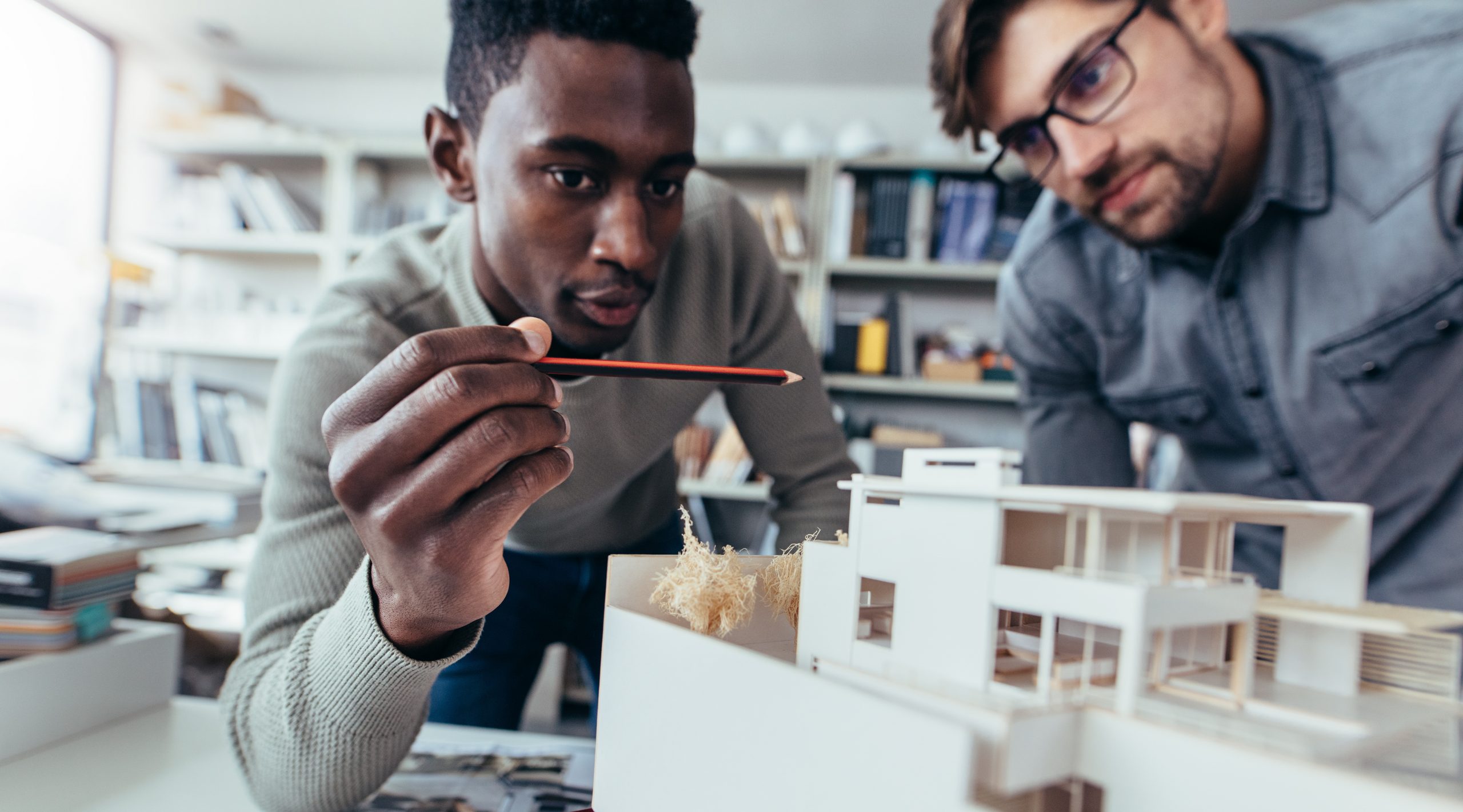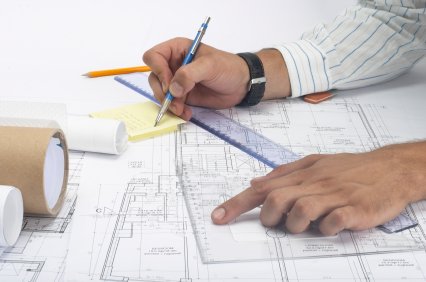Architect Portfolio Showcases That Impress Clients Fast
Architect Portfolio Showcases That Impress Clients Fast
Blog Article
The Function of Sustainability and Modern Technology in Modern Architect Practices
Sustainability and innovation are reshaping modern-day architecture in means you might not expect. By accepting clever developments and green materials, architects are not just creating buildings; they're crafting atmospheres that improve our top quality of life. This shift isn't just about aesthetics or performance; it has to do with creating a responsible strategy to our world's future. What's driving this transformation, and how can these changes effect your neighborhood?
The Importance of Sustainable Architecture
Sustainable architecture is important not simply for the setting but likewise for improving our lifestyle. When you welcome sustainable design, you're not simply reducing your carbon footprint; you're producing spaces that advertise health and wellness and well-being. Think of staying in a home that takes advantage of natural light, improves air top quality, and reduces power costs. You'll feel more comfortable and connected to nature.
Additionally, sustainable design often brings about more powerful communities. When buildings are made with environment-friendly practices, they can inspire others to comply with fit, cultivating a culture of sustainability. You'll see enhanced home values and a greater feeling of satisfaction in your environments.
Finally, by focusing on sustainability, you're investing in the future. You're guaranteeing that future generations enjoy a much healthier planet and lively areas. So, when you consider your next job, believe concerning exactly how lasting style can elevate your life and those around you.
Innovative Materials Changing Building Practices
As you check out cutting-edge materials in design, you'll locate that eco-friendly construction materials are reshaping just how we think of sustainability. Recycled material innovations are providing brand-new life to waste, while clever material innovations boost constructing performance. These advancements not only promote eco-friendliness but likewise press the borders of layout.
Biodegradable Construction Products
While standard building materials commonly contribute to ecological destruction, naturally degradable construction products are emerging as a feasible option that transforms building techniques. By integrating eco-friendly alternatives into your styles, you're not just boosting visual appeal; you're likewise making a favorable influence on the world. As you adjust to these ingenious materials, you'll locate that they offer resilience and adaptability, enabling you to develop structures that line up with modern values of sustainability and duty.
Recycled Material Advancements
Over the last few years, cutting-edge materials with high recycled web content have reinvented structure practices, providing engineers exciting brand-new options - Architect. You can now integrate products like recycled steel, which not just reduces waste however additionally boasts remarkable strength. Recycled glass is one more amazing selection, offering aesthetic allure while reducing ecological impact

Smart Product Technologies
Smart product technologies are reshaping the method you believe regarding developing practices, supplying vibrant options that adapt to altering conditions. These innovative products, such as self-healing concrete and thermochromic glass, enhance structure efficiency and sustainability. By incorporating wise materials, you can develop energy-efficient designs that react to their atmosphere, reducing total energy intake.
The Assimilation of Smart Technologies in Style
As technology advances, integrating clever services right into architectural style comes to be vital for creating sustainable and effective spaces. You can include smart modern technologies like developing monitoring systems, which enhance power use and improve occupant comfort. Sensors can keep an eye on environmental conditions, readjusting lighting and temperature level instantly based upon real-time data. This adaptability not only enhances user experience however likewise minimizes energy consumption.
Incorporating Web of Points (IoT) tools enables seamless communication amongst numerous building systems, enabling you to make data-driven decisions that enhance performance. Smart materials that react to ecological adjustments can further boost your design, providing dynamic solutions to ever-changing conditions.
Energy Efficiency and Renewable Energy Solutions
While numerous architects concentrate on looks, focusing on power performance and renewable resource options is necessary for sustainable design. You can start by integrating passive solar design, which enhances natural light and heat, lowering dependence on man-made illumination and heating unit. Make use of high-performance insulation and energy-efficient home windows to reduce energy loss.
Don't forget renewable power systems-- mount photovoltaic panels or wind turbines to generate clean power on-site. You can likewise think about including geothermal home heating and cooling down systems for a more sustainable temperature regulation.
By picking energy-efficient home appliances and lighting, you'll not only lower energy consumption yet likewise lower functional prices for constructing residents.
Incorporating these More hints concepts into your designs not just profits the environment yet likewise improves the structure's allure and worth. Inevitably, your commitment to energy effectiveness and renewable resource will certainly set your projects apart in an open market.
Water Conservation Techniques in Modern Style
Integrating water preservation techniques right into contemporary architecture is necessary for producing lasting buildings that decrease environmental influence. You can achieve this by incorporating rainwater harvesting systems, which gather and store rainfall for watering and non-potable uses. Applying low-flow fixtures and wise irrigation systems likewise reduces water usage, ensuring reliable usage throughout the building.
Think about making use of drought-resistant landscaping, which calls for less water and advertises biodiversity. Including permeable paving materials enables rain to infiltrate the ground, decreasing drainage and recharging groundwater supplies.
Additionally, installing greywater recycling systems can repurpose water from sinks and showers for bathroom flushing or watering, further conserving resources.
The Influence of Biophilic Layout on Well-Being
Biophilic style brings nature inside your home, and you'll observe its favorable results on your health and happiness. By enhancing indoor air high quality and attaching you with natural environments, these spaces can transform your day-to-day experience. Allow's explore how integrating these functions can improve your total health.
Nature's Impact on Wellness
When you integrate elements of nature right into your surroundings, it can substantially improve your physical and psychological health and wellness. Biophilic design, which stresses natural light, plants, and natural materials, cultivates a sense of connection to the outdoors. Welcoming biophilic layout is a step towards a healthier way of living.
Enhancing Indoor Air Quality
While lots of people focus on appearances and performance in layout, enhancing indoor air high quality plays an essential function in your total wellness. Poor air top quality can result in wellness problems like frustrations, fatigue, and breathing troubles. By incorporating biophilic design aspects, you can enhance air top quality naturally. Plants, for example, not just beautify your area yet likewise filter toxic substances and raise oxygen levels. Using materials with reduced unpredictable organic substances (VOCs) further contributes to a healthier indoor atmosphere. Furthermore, making best use of natural ventilation aids minimize interior toxins. Prioritizing these facets in your layout will certainly not just elevate your space however additionally advertise a feeling of calm and well-being. Ultimately, a focus on air quality is vital for a sustainable and healthy living setting.
Connection With Natural Elements
When you connect with natural environments in your area, you not just improve its visual charm but also greatly boost your well-being. Biophilic layout motivates you to integrate features like plants, natural light, and natural products. These aspects create a calming environment, decreasing stress and anxiousness. Study reveals that being around nature can improve your state of mind and cognitive function, aiding you really feel much more productive and concentrated. When you welcome the outdoors inside, you might notice much better air top quality and boosted comfort. Basic adjustments, like adding a living wall surface or huge windows, can profoundly influence your experience (Architect). Ultimately, integrating nature right into your atmosphere leads you to a much healthier, happier way of life, fostering a much deeper link to the world around you.
Future Patterns in Lasting Building Practices
As the globe faces pressing ecological obstacles, architects are increasingly embracing ingenious techniques to sustainability that redefine how we style and develop. You'll see a rise in biophilic layout, incorporating nature right into urban areas to improve wellness and minimize power usage. Smart modern technologies, like AI and IoT, are streamlining energy management in buildings, maximizing source usage, and lessening waste.
Furthermore, modular building is getting grip, permitting much faster, extra reliable building procedures while lowering ecological impact. The use of sustainable materials, such as reclaimed timber and recycled steels, is coming to be basic practice. As you discover these fads, anticipate a shift toward circular design, highlighting the lifecycle of materials and advertising reuse and recycling.
These forward-thinking methods not only address ecological problems find more info however likewise create much healthier, more durable areas. By staying notified concerning these trends, you can help shape a sustainable future in architecture.
Regularly Asked Concerns
Exactly How Can Sustainability Affect Job Spending Plans and expenses?
Sustainability can considerably influence job expenses and spending plans. You may find that preliminary investments in green materials or technologies bring about long-lasting savings with power effectiveness, lowered waste, and prospective federal government rewards, inevitably balancing reference the total expenses.
What Accreditations Exist for Lasting Design?
You'll locate several accreditations for lasting architecture, including LEED, BREEAM, and the Living Structure Challenge. These accreditations aid you show your commitment to sustainability and can improve your task's integrity and appeal to clients.
Exactly How Does Neighborhood Society Influence Sustainable Style?
Neighborhood culture forms lasting design by showing area products, traditions, and values. You'll discover that incorporating local aesthetic appeals and techniques not just respects heritage however likewise boosts the capability and approval of your building tasks.
What Duty Does Customer Education And Learning Play in Lasting Practices?
Customer education and learning's essential for promoting sustainable practices. When you inform clients regarding advantages, expenses, and environmental effects, you equip them to make informed decisions, fostering a collaborative approach that enhances the project's total sustainability.

How Can Architects Determine the Success of Sustainability Campaigns?
You can gauge the success of sustainability initiatives by tracking energy usage, examining product performance, and celebration responses from clients. Regular audits and comparisons against criteria will certainly aid you improve your approaches and showcase enhancements properly.
By integrating smart materials, you can develop energy-efficient designs that respond to their environment, decreasing overall power consumption.While numerous designers focus on aesthetic appeals, prioritizing energy effectiveness and sustainable energy services is vital for lasting layout. Biophilic design, which stresses all-natural light, plants, and natural materials, fosters a sense of link to the outdoors. Biophilic style encourages you to include attributes like plants, natural light, and natural products. As you discover these fads, anticipate a change toward circular design, emphasizing the lifecycle of products and promoting reuse and recycling.
Report this page